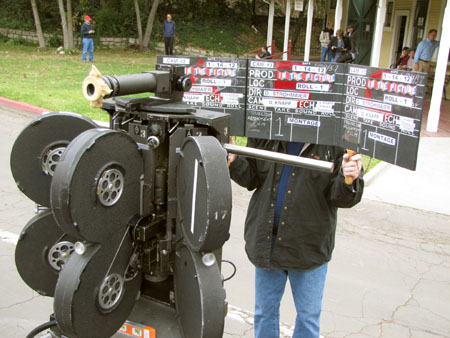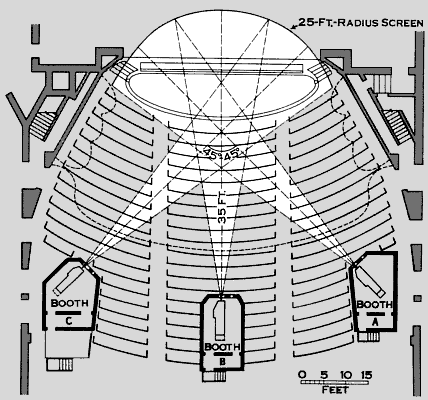John Ary here with a look back at one of cinema’s biggest technical achievements or greatest gimmicks... it all depends on how you view the format of Cinerama.

This contraption here is a Cinerama camera setup. It has three 35mm cameras that shoot 26 frames per second using 27 mm lenses, mounted together to simulate a person’s 146 degree field of vision. The picture is then transmitted using three projectors on a curved screen. If it was up to the technology’s creator Fred Waller, this is how Hollywood in the 50’s and 60’s would have shot and exhibited movies.

To celebrate the 60 year anniversary of Cinerama, Flicker Alley has created a simulation of what it was like to attend the first film shown in the novel format. On September 30, 1952, The Broadway Theatre in New York hosted the first ever screening of This is Cinerama, a demonstration film that Rose Pelswick of the N.Y. Journal-American called “The most important step in motion pictures since the advent of sound.” Audience members were treated to a ride on a roller coaster from a first person perspective, a tour through the canals of Venice, a performance from the Vienna Boys Choir, a water ski show from Cypress Gardens in Florida and several other picturesque landscapes and artistic performances from across the world. Cinerama promised an engrossing experience that would make people forget about a new medium that was considered a major threat to the motion picture industry: television.
The new Blu-ray begins with the 10 minute overture and the image of a curved screen covered by a blue curtain. The curtain then opens part way revealing Lowell Thomas, a radio headliner, author, correspondent, explorer, world traveler and host for the evening. He takes us through the history of movie technology in a very industrial-film-from-the-50’s-
While viewing the footage, it’s clear to see some of the downsides of the format. For starters, the camera is fairly immobile. With one or two exceptions it stays static, giving you a wide shot and not much else. The output from the camera, while grand in scale, doesn’t have the capability of pulling close-up shots or shifting focus. The only movement we do get is a dolly shot in a church or when the camera is strapped to the front of a moving object like the nose of a B-52 bomber coasting through the sky or the back of a speedboat in the water. Also, there are creases in the screen that show exactly where one camera stops and another starts. This can be distracting as the footage from the different cameras doesn’t always line up perfectly with the others. Cinerama is supposed to simulate your vision, but these small inconsistencies in the creases of the screen make it hard to fully lose yourself in the images. Also the screen itself is much different than the one you would find at your local cineplex.
The new Blu-ray begins with the 10 minute overture and the image of a curved screen covered by a blue curtain. The curtain then opens part way revealing Lowell Thomas, a radio headliner, author, correspondent, explorer, world traveler and host for the evening. He takes us through the history of movie technology in a very industrial-film-from-the-50’s-
While viewing the footage, it’s clear to see some of the downsides of the format. For starters, the camera is fairly immobile. With one or two exceptions it stays static, giving you a wide shot and not much else. The output from the camera, while grand in scale, doesn’t have the capability of pulling close-up shots or shifting focus. The only movement we do get is a dolly shot in a church or when the camera is strapped to the front of a moving object like the nose of a B-52 bomber coasting through the sky or the back of a speedboat in the water. Also, there are creases in the screen that show exactly where one camera stops and another starts. This can be distracting as the footage from the different cameras doesn’t always line up perfectly with the others. Cinerama is supposed to simulate your vision, but these small inconsistencies in the creases of the screen make it hard to fully lose yourself in the images. Also the screen itself is much different than the one you would find at your local cineplex.
